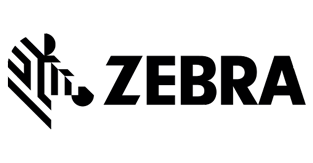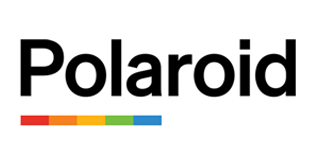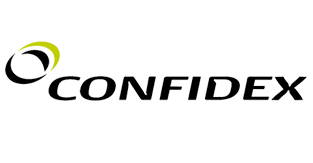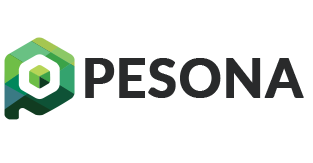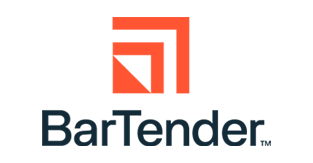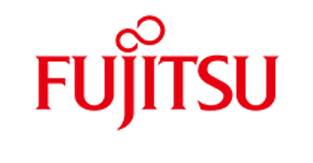Several factors contribute to return on investment (ROI), from how much you spend on labor to expenses related to software, like labeling and barcode software for your enterprise business. Labeling is particularly critical as it impacts the entire supply chain, from manufacturers to the consumer. One small labeling error can necessitate reprints and relabeling or incur compliance fines that can be very costly.

For industries like food and beverage, medical devices and pharmaceuticals, labeling plays a crucial role in enabling compliance, driving business and meeting consumer demands. Labels carry important data about each product, including safety information that affects consumers or individuals handling hazardous materials, like those in the chemical industry.
How does inefficient labeling impact ROI? Keep reading to learn more about what to watch out for and how an automated labeling solution can help you avoid unnecessary supply chain disruptions.
1. Labeling errors due to multiple label files
As companies grow, particularly if they’re expanding into new, international markets, they are sure to encounter varied sets of labeling regulations, which can present unique challenges when it comes to streamlining label design, creation and printing. In many organizations, label updates are made manually, and each new label is saved as its own file. This way of managing labeling is inefficient, creating duplicate labels that are often housed on employees’ hard drives and shared via email. It introduces the potential for error into a system.
This can result in hundreds of label files that are difficult to find or make sense of for print operators and other stakeholders. While this manual process may function for a time, once global label changes need to be made, it becomes extremely difficult to accurately update files to include data for product changes, government regulations, change in address or software updates.
When these global changes need to be made, it can require many hours of labor and potentially cause downtime in production. Without an automated process, it can also leave the door open for labeling errors.
Solution: Consolidate Label Templates
Many labeling software solutions offer the ability to consolidate those hundreds of files into templates that accommodate variable data, thus eliminating the need for a file for each product.
BarTender® created Intelligent Templates™ so companies can produce a wide variety of flexible label designs without having to create and maintain hundreds of separate documents. You can vary the image, color, object position and text on each item that you print. The following dynamic design techniques are included:
- Conditional printing: specify exactly when different objects, layers or templates in your document are printed.
- Suppression: differs from the conditional printing methods previously in that data sources are suppressed, or hidden, when a condition is met.
2. Compliance-related fines
Companies in regulated industries like medical devices, pharmaceuticals, chemicals and food and beverage are subject to regulatory compliance from governing bodies around the world. This adds a layer of complexity and awareness to the labeling process that can lead to mislabeling, which can be costly, present legal challenges and cause safety risks for consumers or workers.
For multinational organizations, the challenges only increase because labeling and barcode compliance must adhere to local, regional and national standards, in addition to industry standards. Staying on top of the ever-evolving nature of regulatory compliance is difficult, especially if these companies rely on manual or outdated labeling processes.
Costs aren’t just associated with the compliance fines but can also cause supply chain interruptions that slow down shipments or production, increased materials costs related to reprints and additional labor.
Automated labeling solutions like BarTender® software keep up with the pace of evolving standards so you don’t have to. By integrating with existing systems like Oracle, SAP, and other enterprise resource planning (ERP) and warehouse management systems (WMS), BarTender takes your data and ensures it’s accurately applied to the correct templates, with built-in business logic enabling compliance and ensuring consistent, accurate labeling across the supply chain.
BarTender’s Intelligent Templates™ give your company the agility it needs to respond quickly when there are business, industry and regulatory changes that need to be reflected on a label. By editing the label template’s data, format or design, the changes are applied to every label associated with that template, across the whole organization, no matter where you’re operating in the world.
3. Product recalls
Product recalls are often the result of poor labeling practices, including faulty manual entry, outdated software, the wrong data or printer errors. If a product is recalled due to mislabeling, it can tax the entire supply chain leading to added production, labor, relabeling, shipping and materials costs. Common recalls may be caused by:
- Undeclared allergens in food
- Mislabeled aerospace parts
- Incorrect tracking codes or Instructions for Use (IFUs) in pharma manufacturing
- Wrong hazard information on chemical labeling
- Incorrect Unique Device Identifiers (UDI) on medical devices
Unfortunately, it may not even be your organization, but another stakeholder in the supply chain, or a vendor that mislabels a product, leading to costly relabeling, compliance fines, delays in production and diminished consumer confidence.
When choosing labeling software, it’s important that it can handle the demands of enterprise labeling to avoid mislabeling that leads to recalls. Features should include:
- Template consolidation to avoid confusion
- Management of dynamic data
- Intuitive and easy to use/train workforce and partners
- Web-based triggers that telling templates, layers or objects when to print
- User-based permissions to ensure security and prevent unauthorized changes
4. Supply chain inefficiencies
Supply chains are complex in today’s global economy with one product potentially traveling through numerous countries and touchpoints before arriving at its final destination — and poor labeling can be at the crux of those inefficiencies.
Without proper supply chain labeling practices, costs can add up quickly related to:
- Labor needs
- Relabeling
- Compliance violations
- Inventory management
- Shipping delays
For many organizations, there is also minimal visibility and transparency between stakeholders, which leads to a siloed approach to labeling. Without proper visibility, a labeling error that occurs with a manufacturer could trickle down into other parts of your supply chain.
Solution: Standardise Labeling Processes
Standardized labeling processes across the supply chain can help achieve the accuracy and warehouse efficiency goals by providing the interoperability that’s crucial in demanding supply chain environments, leading to a streamlined and simplified approach.
Having a secure, reliable labeling system that integrates with existing systems and workflows enables a single source of truth data management that helps align different parts of your supply chain including:
- Logistics
- Warehousing
- Transportation
- Compliance
- Traceability
With a standardized labeling process, you can address issues related to data variability, making changes and updates automatically. This creates a proactive approach to labeling that limits labeling errors through your supply chain by identifying when and where changes need to be made before there’s a problem, leading to improved ROI.

5. Materials and inventory costs
Month after month, companies waste considerable time, resources and expenses related to correcting labeling errors or preparing products and materials with labels before moving onto the next point in the supply chain.
For some companies, they may have a backlog of products or parts sitting around awaiting labels or sorting, slowing down workflows, production and shipping time. This could be the result of an issue with a partner or vendor who isn’t properly set up to print labels or isn’t integrated with your labeling system.
If a product has been mislabeled with a barcode error and can no longer be used, often new products will need to be manufactured in addition to reprinting correct labels. Between the manufacturing costs and label production, this can cost companies millions of dollars that could be saved with the right labeling system.
Solution: Secure Remote Label Printing
One of the best ways to ensure labeling consistency across your first- and second-tier suppliers, vendors, clients and employees is to create a label library that they can access when needed. BarTender’s browser-based Print Portal puts label selection and printing in the hands of any colleague or trading partner who has access to an internet connection, and from any device or operating system.
The system can assign specific permissions so that users have access to only specific labels, from the correct templates, avoiding confusion with other label files. There is no need for partners to install apps or a local client.
These solutions help eliminate relabeling, which results in less material being used, more efficient supply chains and production lines, lower labor costs and decreased expenses related to storage and inventory.

Achieve greater ROI with an effective labeling strategy
Labeling is an essential part of all businesses but is especially critical for companies that operate complex supply chains and in highly regulated environments. Costs associated with labeling errors can add up and affect the bottom line, limit growth and damage consumer confidence.
Article Credit: https://www.seagullscientific.com/resources/blog/how-inefficient-labeling-can-impact-roi/


